#One-flowered Broomrape
Text
Naked Broomrape - A Fascinating Parasitic Plant
Naked broomrape (Aphyllon uniflorum) is a beautiful little plant that is parasitic on sedums, saxifrages, and members of the sunflower family. It is found in southeast Vancouver Island, nearby southern Gulf Islands and parts of southern British Columbia.
British Columbia is home to a number of spectacular broomrapes like naked broomrape (Aphyllon uniflorum). These beautiful parasitic plants are easy to miss because of their size. However, once you know what to look for they can be found regularly. Understanding the connection between the parasite and the host plant is an important factor in locating and identifying different species of broomrape.…

View On WordPress
#Aphyllon uniflorum#British Columbia#Comox Lake Bluffs Ecoreserve#Comox Valley#Naked Broomrape#One-flowered Broomrape#One-flowered Cancer Root#Oregon stonecrop#Orobanche uniflorum#Parasite#Sedum oreganum#Vancouver Island#Wildflowers
7 notes
·
View notes
Text
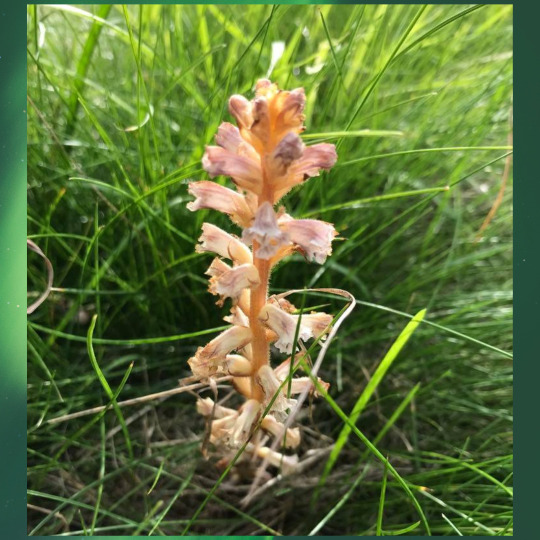
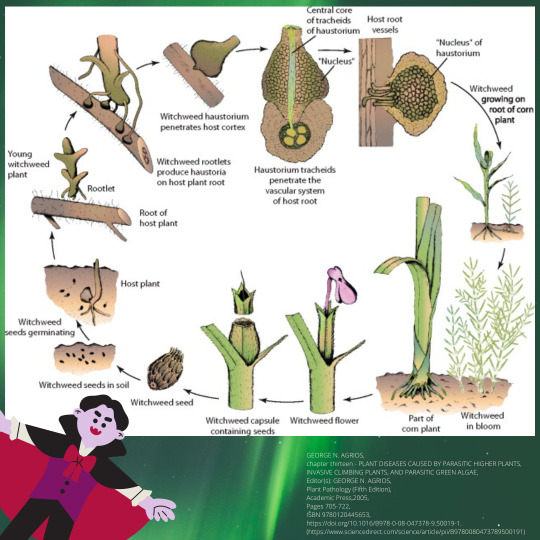
Imagine finding this unusual-looking wildflower in a summer meadow... One might assume, based on its mauve colour and upright growth, that it is a native European orchid. However, the truth is far stranger and more sinister - this odd wildflower is a "vegetable vampire" sucking the vitality from nearby plants!
The Common Broomrape (Orobranche minor) is a species of parasitic plant distributed across Europe. This plant is a "holoparasite", meaning it still has the basic anatomy of a plant (leaves, stems, roots, and flowers) but it lacks the ability to do photosynthesis and thereby generate its own energy for growth and reproduction. Most members of the Orobrancheae plant family are parasites, including the famous Striga genus which is a major pest of economically important crops such as maize and sugarcane in Sub Saharan Africa.
How does the "vampire" find its victims? Broomrape seeds can remain dormant in the soil of meadows, roadsides, and other environments for many years. If a preferred host plant starts growing near the dormant seeds, the seeds sense biological chemicals released by the potential host plants' roots. The Broomrape prefers Fabaceae (Pea family) and Asteraceae (Daisy family) plants. As the parasitic plant germinate and grows, it develops specialised roots called "haustoria" that physically penetrate the hosts' roots and extract nutrients from the host. The "vampire feeding" happens underground, so the Broomrape appears to be another innocent wildflower aboveground.
If you find a Broomrape anywhere in the UK or Europe, don't feel compelled to be a "vampire hunter" and destroy it. Please leave it be! The native European Broomrape is part of the natural ecosystem and it does not harm any crops or garden plants.
#broomrape#orobranche#striga#witchweed#parasitic#parasite#parasiticplant#orobanche#creepyplant#vampire#vampireplant#haustoria#parasitism#plantbiology#plantscience#botany#wildflower#katia_plantscientist
#katia plant scientist#botany#plant biology#plants#plant science#parasite#parasitic plants#parasites#parasitism#weird nature#wildflowers#thief#vampires#vampire#creepy nature#spooky nature#uk nature#plant photography#flowers
9 notes
·
View notes
Text
SpecBio concept #5: Plantworld
A planet resembling Earth in its late Archean state (higher temperature, no free oxygen, dense atmosphere, extensive salty oceans, thick coat of carbon dioxide), perhaps more tectonically stable, extensively seeded with Earth plants and bacteria. Not a single animal or fungal species is brought.
The first green settlers struggle to get a hold on the barren continents, in absence of fungi to erode bare rock and worms to aerate the ground. But some ground is more hospital than other, the first layer of debris provides soil for the survivors, and eventually plant life starts to grow properly.
For many millions of years the plants thrive, thanks to the abundance of carbon and water, the higher temperatures, and the lack of oxygen to interfere with carbon fixation; but eventually oxygen starts piling in the atmosphere, gigatons of carbon are locked into wood and buried debris (to be released in pulses only when wildfires burn out uncontrollably), and the diminished greenhouse effects starts to cool down the planet sensibly. The forests start to shrink.
There’s an obvious niche to be exploited there. Parasite plants without chlorophyll exist on Earth right now, such as the very unfortunately named broomrape. They’ve always thrived on Plantworld in many lineages, with the bounty of hosts to exploit, but now they can do one better: they find out how to secrete acids and enzymes to break apart cellulose, much like fungi did on a forgotten planet, and start consuming the vast dead biomass.
The decomposer plants scatter their pollen and seeds to the wind (no animal disperser to exploit), gliding away on wing-blades like maple seeds, but why stop there? If they gather enough energy, they can manipulate osmotic pressure inside the seeds to move the blades, until they can flap them like wings. This consumes enormous amounts of sugar and oxygen: each plant can afford very few seeds. The strands of turgid cells become analogues of muscles, and soon Planetworld’s forests are abuzz with little flying seeds, flying as far as possible from the mother plant to avoid competing against their own kin.
Each incremental improvement to fitness suggests others. If you sharpen your chemical senses, you could detect the places were there is fewest competition... if you steal back some photosynthetic pigments from your prey (which are but light detectors, after all) you can repurpose them into crude eyes to look for better ground... if you can move your wing-flaps, you can move them on the ground to place yourself in a better germinating position.
Absorbing matter through roots is agonizingly slow for these increasingly energic parasites. It would be much quicker to take food in bulk. The flying seeds secrete powerful saliva-like enzymes to degrade the matter on which they germinate; they use their osmotic muscles to grind shell-plates against each other like tiny jaws; they develop internal specialized glands... And eventually they discard the roots at all, which have lost their use. Why bother growing into a plant form? You can just stay a flying seed all your life, and sprout your flowers directly there. Actually, now that you’re so nimble, you can just seek out your mates directly.
Half a billion year later, Plantworld has a rich biosphere full of animal life; swift-footed grazers and silent ambush predators, swarming minute plankton and giants feeding on them by the millions, industrious hive-builders and devious endoparasites; and perhaps some creature with inquisitive brains and dexterous hands who is in for a big surprise or two when they finally chart the history of life on their world.
EDIT 26-11-23: used to be #4, but then I remembered the actual fourth concept
SpecBio concept #4 (a biosphere feeding on sound, inspired by @cromulentenough)
SpecBio concept #3 (children falling from the “sky”)
SpecBio concept #2 (liquid brain, chemical memory)
SpecBio concept #1 (double silicate biosphere, one hot, one cold)
18 notes
·
View notes
Note
Is there a way to keep a plant with no chlorophyll alive? Sometimes plants which aren’t supposed to be white are just fully white, and they still sprout and then die once they don’t have their backup nutrients to rely on anymore, hypothetically is there a way to keep them alive til adulthood at least?
RIGHT. For the uninformed. Which I doubt any if yall are you've all.passed secondary, chlorophyll is what makes plants green and chlorophyll is what allows plants to photosynthesize 6CO2 + 6H2O → C6H12O6 + 6O2, don't quote me on that it's the top of my head and its 11 30, without chlorophyll the plants would be white and therefore cannot photosynthesis and take in their nutrients normally.
It is actually pretty possible to do this, coast redwoods for example, massive trees they are, and while they appear to be functionally separate plants on their own, they maintain connections with their parent plant, sort if a parasitic relationship if it wasnt for the fact that it isikley that these albino redwoods leach heavy metals and other such toxins out of the soil, they already tend to grow more in metal contaminated areas and cutting them down shows a far higher concentration of shit like nickel cadmium and copper
However this could also be because redwoods are hexaploids, they have 6 copies of genetic code versus the diploid that we have, so it is statistically easier to get mutations, and as this mutation doesnt outright kil the plant, it stays in the system, and well, you need a liver, they kind if serve as livers for their parent tree, and this has been observed in other species if trees like beaches so that might be a thing.
This is closer to symbiosis than parasitism, which is exhibited in plants like the naked broomrape, their stalks are completely white and have no leaves, only flowers, which they use to further their population, and they leech off other plants and like.like, maybe a dead fox or smth.
What I'm getting at is parasitism or symbiosis is one option.
The other option is a more lab grown option, there were a couple trials with normal corn seedlings and white corn seedlings in a controlled lab grown environment, they were administered both the same amount of glucose to keep em alive, one study recorded a 17 percent lower respiration rate, some recorded similar whole.others recorded next to no difference so idk, but plants can be supported in a lab.
The study is here I'm just sleepy rn and biology is better to get into yourself.
Seltmann, Heinz. “Comparative Physiology of Green and Albino Corn Seedlings.” Plant Physiology, vol. 30, no. 3, 1955, pp. 258–63. JSTOR, http://www.jstor.org/stable/4258914. Accessed 27 July 2023.
#The heam speaks#BIOLOGY#ask answered#This is not as deTailed as I wanted it to be. Maybe I'll come back to this in the morning#Reference#We stan sometimes being normal on tumblr
3 notes
·
View notes
Text
Weed Damage: How To Fix Your Weed-Damaged Home Or Garden
Weed is a beautiful flower that many people love to grow indoors and out, but it can also become damaging if it gets too much sunlight, so you should be aware of the harm you might do to your house or garden with weed plants.
What causes weed damage?
When we speak of weed damage, there are actually a few options that come to mind.
The most common cause of weed damage is over-watering. When excess water accumulates on the soil surface, it attracts weed roots and can cause them to grow through the protective layer of soil. Once they reach the surface, these weed roots start to absorb water and nutrients like crazy - causing permanent damage to your plants. The best way to prevent this is to make sure you keep your soil constantly moist but not soggy.
Another common culprit of weed damage is pests like rabbits and deer. These animals are known for their propensity for eating all kinds of plants, regardless of their nutrient value or size. If you have any kind of wildlife in your area, be sure to keep an eye out for suspicious behavior and report any sightings to your local authorities.
Finally, there's weather-related weed damage. For example, if there's been a lot of rain recently, the ground may be saturated which will help attract weed roots and encourage them to grow. Alternatively, if it's been really hot or cold lately, the soil may be too dry which will also lead to weed growth. In both cases, fixing
How much weed damage will your property sustain?
Weed damage is a common issue due to the fact that weed growth is fast and dense. The amount of weed damage will depend on the type of weed, the severity of the infestation, and the overall condition of your property. Let's take a look at some common weeds and their damage potential:
Common Weeds That Cause Property Damage:
-Pineapple Weed
-Dandelion
-Cottonweed
-Aconitum
-Russian Thistle
-Ephedra
-Broomrape
-Queen Anne's Lace
Prevention of weed damage
Prevention of weed damage is key to minimizing the potential for your home or garden to suffer any kind of damage. Here are a few tips to help keep weed damage at bay:
1. Get rid of any existing weeds before planting any new plants. This will help to prevent any future weed growth.
2. Keep your lawn mowed regularly and free of debris. This will help to reduce the number of places where weeds can grow.
3. Prune your bushes and trees regularly to remove dead or diseased branches, which can provide an ideal environment for weed growth.
4. Use a cover crop prior to planting a vegetable or flower garden to help suppress weed growth and add nutrients to the soil.
5. Educate yourself about weed identification and how to properly deal with them if they do grow in your garden or home. This will help you avoid any costly repairs or damages down the road.
Weed removal: spray, brush or bag
One of the most common home repair problems is weed damage. For many homeowners, dealing with pesky weeds is a regular chore. From tearing out entire patches of yard to removing small plants from around patio furniture, there's no shortage of ways to get weed removal done.
Here are three methods for weed removal: spraying, brushing or bagging.
Spraying: When it comes to weed removal with a hose, spraying is probably the simplest and most effective method. Just make sure to use a pesticide that is specifically designed for weed control, such as glyphosate or dicamba. Remember to aim the spray directly at the weeds, and be patient - spraying will usually kill them within a few minutes.
Brushing: If you're looking for an easier way to clear away those pesky weeds, try brushing. Start by pulling up any large plants that are blocking your view. Then use a stiff-bristled brush to scrub the ground beneath the plants clean. Be sure to wear gloves and Protective gear when brushing in order to avoid getting stung by any snakes or bugs in the area.
Bagging: Finally, if you're having trouble controlling your weed problem with spraying or brushing, consider using a
Weed prevention
It’s no secret that weed is a popular garden and home flower. But like all things, there can be consequences when this plant is overused or abused. If your weed garden is in disrepair or you’ve noticed weed growth in places you didn’t intend, it might be time to take action.
There are a few things you can do to prevent weed damage in your home or garden:
1. Control the amount of seed you plant. It’s not wise to try to eradicate an entire weed patch with one herbicide application – it will just result in more resistant plants next time. Weed control by cultivation or mulching is the most effective way to minimize weed growth without harming desirable plants.
2. Properly prepare the soil before planting. Add organic matter (such as compost) and lime if needed to create a balanced, moisture-retentive soil. Add plenty of organic material before planting so that the new plants have something to root into and build their own protective layer of earth over time.
3. Start with low-growing varieties of weeds like chickweed and dandelions rather than trying to battle taller varieties such as
How much to clean up and what to do with it
Cleaning up weed damage is not always an easy task, but it is definitely important. If you have any questions about how to clean up weed damage or what to do with it, be sure to ask your local gardener or homeowner’s association. Here are some general tips to follow:
-Remove any plants that were directly impacted by the weed. These plants may have been killed and cannot help clean the area up.
-If you can, try to salvage any of the affected plants. Remove any flowers, leaves, and branches if possible. Steam or soak the plants in a bucket of water mixed with a little bleach for 10 minutes, then scrub them clean. Repeat this process two more times if necessary. Be sure to dispose of the plant material properly so it does not end up in your yard again. buy magic mushrooms Quebec.
-Clean any soil that was disturbed or removed from the area. Rake out any weeds, then mix in a layer of sand or gravel until the soil is back to its original level. This will help prevent future weed growth.
0 notes
Text

i have all these pics on my phone and they are simply too cool to just delete. they’re from trip to burren i took with work…. this is what we thought was a thyme broomrape… if u look to bottom left you’ll see wild thyme which is what it parasitises on. it doesn’t have chlorophyll how cool is that

this amazing thing is a mountain aven once it has finished flowering. i think it looks like a falling star… u can also see it’s leaves all around it too
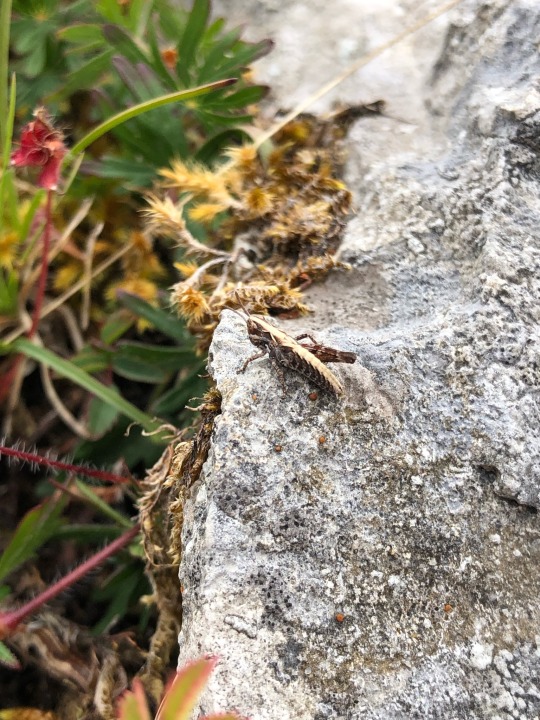
a friend and a boy… some type of grasshopper i am not sure of species

most beautiful shocking vibrant colour that belongs to a bloody cranesbill- type of geranium
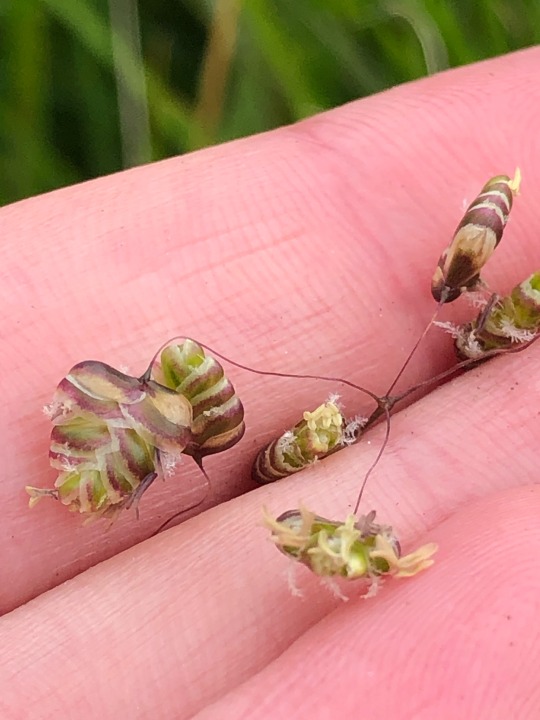
close up of one of my favourite grasses ever, quaking grass


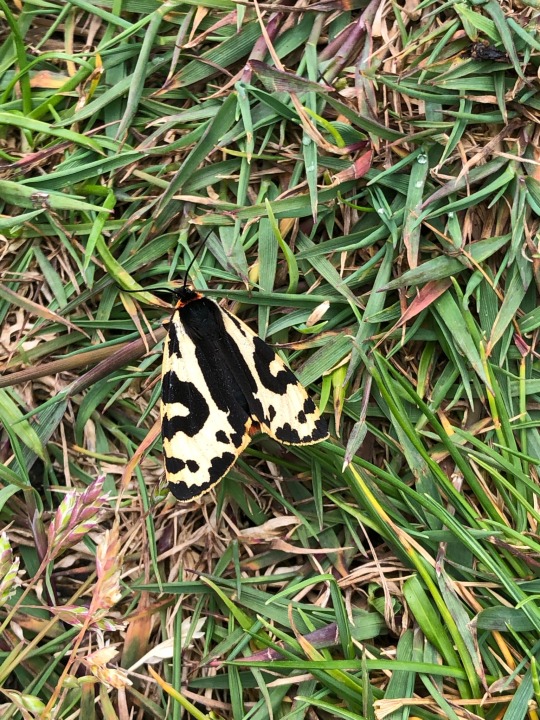
and finally the moth butterfly finds of the day… dew moth, transparent burnet (never seen one of them before HOW cool) and a wood tiger
1 note
·
View note
Photo

One-flowered Cancer Root (Orobanche uniflora) (documentary)
Parrish Oak Savannah, WI, 5-27-17
#one-flowered cancer root#one-flowered broomrape#orobanche uniflora#flower#wildflower#nature photography#state threatened species
8 notes
·
View notes
Note
Hi! Guy who knows too much about random stuff here. The "rape" in rapeseed is derived from the Latin rapum, meaning turning. Other examples of this use include Brassica rapa, the scientific name for the turnip, and the broomrape, whose comes from its flowers' superficial similarities to true broom flowers and the presence of a turnip-like root vegetable. As for why no one saw a problem with the name, these names are so old that "rape" had several different definitions at the time.
I wonder why nobody renamed them since, considering the modern definition of the word.
32 notes
·
View notes
Photo

One-flowered cancer root, Orobanche unliflora. An interesting parasitic plant that has no green parts. We saw it on our wildflower walk today.
22 notes
·
View notes
Text
Upside Down Headcanons:
Gonna tag @kingbillyharringrove because the two of us have talked in depth about this before, and @paladin-cleric-mage because they requested me to tag them! Love you guys. Lots of this will be me babbling about cool facts too because I love biology so much.
The most commonly accepted and seen headcanon- the Upside Down wildlife (with the possible exception of the Mindflayer) are a form of semi-sentient plant evolution. That being said, I'm now going to break down the different plant aspects of wildlife I have developed and would like to share, as well as habitat, time cycles, and weather.
Parasitic Plants
I would like to bring to your attention Rafflesia Arnoldii, also known as the Stinking Corpse Lily. It has a putrid, decaying flesh scent and produces the largest known individual flower in the world. "It is parasitic on members of the genus Tetrastigma (in the grape family, Vitaceae). It has no roots or leaves and most of the time lives unobserved inside the woody stems and roots of its host." (Source) Also, it looks like this:
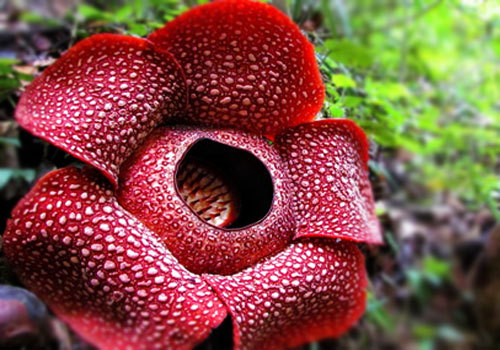
I can absolutely see the Democreatures being evolved from this beauty. In their larval stages, they would have to have a host to survive(as seen with Will, who was the host for what was probably Dart) There are many different types of Rafflesia that look very similar but are smaller however, so that's food for thought as well.
While we have not seen much in terms of the actual Upside Down (which is both a shame and a crime), it is easy to assume there are more living variants to the ecosystem than just the three we have been shown. It is, after all, an entire realm parallel to our own. And so, I would like to introduce you to Hydnora Africana, another unique parasitic plant, that grows in the roots of Euphorbia caput-medusae, a succulent. It's undetermined whether or not it has roots or a stem, though it's makeup lends it more towards having one root system and no stem. It's appearance is also fascinating, and it's far too easy to imagine some monstrous creature based off of it:


The fine white threads when in first bloom are just wide enough for beetles to get in through, but may find it difficult to escape through. After a few days the "teeth" pull apart so that the beetles may escape and distribute their pollen. (Source)
There is also the plant Orobanche fasciculata, or Clustered Broomrape. They are endangered in many states, including Indiana! (Source) "Clustered Broomrape (Orobanche fasciculata), also known as Yellow Broomrape, has mostly 5-10 long, slender, 1-flowered stalks rising from a short, trunk-like stemusually 2-6 inches (5-15 cm) long. It occurs in the midwestern and Plains states." (Source) It is also nicknamed the Cancer Root, and it's a parasitic herb. The species has both male and female reproductive organs, and is a perennial(meaning it comes back each year.) (Source) It is parasitic on the roots of Ambrosia and other members of the Compasitae. It is one of plants I have based herbivorous creatures off of, prey animals that act as a food source for Rafflesia and Hydnora variants. The reasoning for this is because of its medicinal uses. "The root is pectoral. The chewed root has been used as a dressing on wounds and open sores. An infusion of the leaves is used as a wash on sores. Forms of the plant that are parasitic on sweet sage roots have been used as a treatment of cancer." (Source) It looks like this:
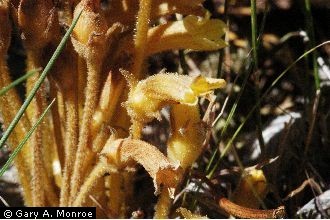
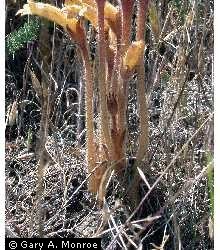
Fungi
With the spores that are constantly in the air of the Upside Down, and the often-times toxic nature of fungi, it's all too easy to picture variations of wildlife as evolved sentience from them as well. Here are some good contenders for potential wildlife!
Hydnellum Peckii, or the Bleeding Tooth Fungus, is a creature I've actually drawn and designed before! Similar to the Demogorgon, it is a humanoid omnivore. "Scientifically known as hydnellum peckii, the young bleeding tooth fungus’s thick red fluid oozes through its tiny pores, creating the appearance of blood. The underside of the cap has tooth-like spines. As it matures, the mushroom’s pale pink centre becomes dark, almost black, in colour... The bleeding tooth fungus is a mycorrhiza fungus, engaging in a symbiotic association with the roots of a vascular plant. The fungus receives fixed carbon from the host and, in return, improves the host plant’s mineral absorption." (Source) It looks like this:


The Bleeding Tooth Fungus creature is a stealth hunter, lying in wait completely still. The blood colored fluid is also scented like blood, luring in unsuspecting prey for the creature to strike quickly and effeciently. It is not built for speed but rather strength and quick movements.
Armillaria mellea, also known as a Honey Mushroom, is a parasitic version that colonizes dead or dying plants, and will kill living hosts. It has an enzyme that gives it bioluminescence, and colonized plants where this fungus is present are known as Foxfire. (Source) It looks like this:
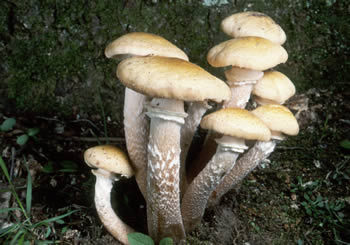
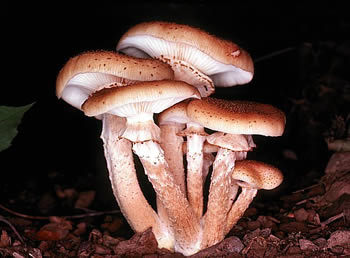
Creatures based off of these fungi would loan themselves to bioluminescence, in either a total glow or perhaps something with design, such as species patterns.
Bioluminescence
This one is purely self-indulgent and festures heavily into an AU I've had in development for months and talked about at length with @kingbillyharringrove and @wickedlittleoz for being a rare jarringrove au.
I like to headcanon that there are enzymes that exist naturally in the water of the Upside Down, and when ingested and entering the bloodstream have a reaction with white blood cells that cause a bioluminescent reaction. I like to headcanon that this is why, despite the darkness of the night, it is never truly dark. There's always a dull glow at the very least.
Day & Night Cycles
I love the idea of the Upside Down having a day time, and I now feel ROBBED knowing that the original concept art had considered it! I like the idea of the Upside Down having a Red Sun instead of a sun like ours. During the day, the world os illumimated in a reddish glow and colors appear distorted to what we are used to. The plants tend to have more bluish purple tones during the day.
The dusk and dawn times are brilliant and full of life, with all the glowing beasts and fungi bursting to life in the first hour after sunset and right before sunrise. The late night period is the darkest, when things are either sleeping or hunting. Carnivores have evolved so that their glow is hidden, patterned like the flora surrounding them. This helps hide them from prey animals who might have eyes and flee.
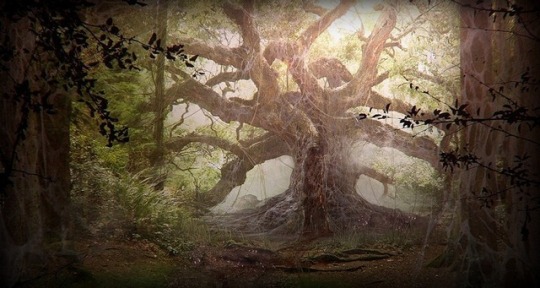
(Early concept art for the Upside Down)
Weather and Habitat
Now aside from the storm surrounding the Mindflayer, we don't have any real basis for the weather in the Upside Dowm aside from stale and still. My own headcanons include a few other phenomena including:
Acid rain storms. It's a world of death and shadows and decay. Acid rains fit in beautifully with this ideal.
Extreme heat waves, especially during the summer months when many of the creatures travel deep deep south or high high north towards the ever-frozen poles. Alternatively, the summer is when the heat-based creatures come out from hibernation or migrate back from their position at the equator.
Speaking of the equator, much like our world it's considerably warmer than the rest of the planet. Unlike our world, it's literally uninhabitable by the rest of the planet. It's a scorching barren wasteland with extreme volcanic activity and large pockets of gas below the surface of the earth that frequently boil over and explode. The gases are deadly to breathe in even for the native creatures.
Sand and glass storms. Sand storms are prevalent on the outskirts of the equator, where deserts line the center of the globe. Glass storms are closer to the center of the equator, where freak lightening and rapid heat rising keeps the sands crystalized and when the wind catches them and cools the molten sand rapidly, it turns into glass. It's not fun.
The Ocean
This one is fair game, and honestly? Not one I've put too much development into because the possibilities are wider than we can even imagine. I mean, hell. Our OWN oceans provide otherworldly horrors on a daily discovery basis. What would the Upside Down have to offer?
The only thought we've really put into it is @kingbillyharringrove and I decided that the deepest part of our own ocean was a connector to the Upside Down's. When it comes to the oceans, our worlds overlap consistently.
21 notes
·
View notes
Text
Collected on This Day in 1884
by Mason Heberling

Not all plants have leaves. Beech drops (Epifagus virginiana) is one such example.
This specimen was collected on November 16, 1884 growing on the root of a beech tree (Fagus grandifolia) at the back of a cemetery in Allegheny county. The specimen was collected by John Shafer, who a decade later became the first curator of botany at the Carnegie Museum of Natural History.
Beech drops is a parasitic plant – rather than having leaves to photosynthesize, the species produces root-like structures (called haustorium) that parasitizes roots of beech trees.
The genus “Epifagus” refers to this parasitism on beech (“epi”= upon; “fagus” = beech).
Beech drops are in the broomrape family (Orobanchaceae), which is comprised mostly of parisitic plants.
Check out the beautiful, distinctive purple and white flowers in late summer to autumn.
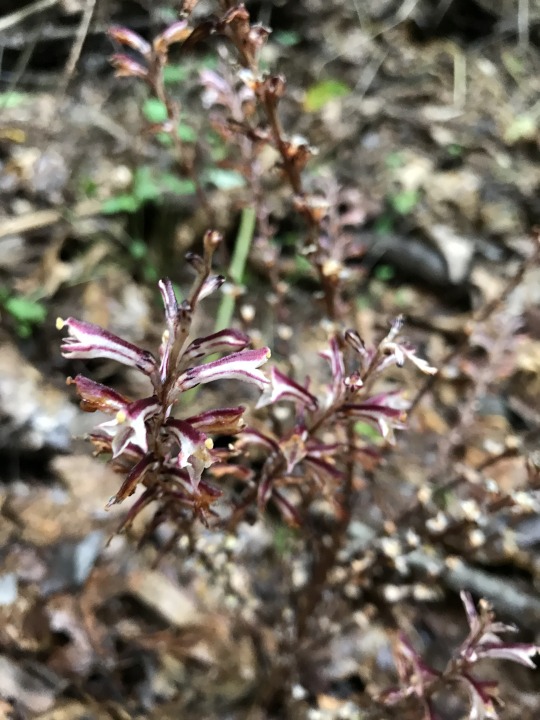
Beech drop flowers. Photo taken on September 12, 2018 at Riddle Run, Springdale, Pennsylvania.
Botanists at the Carnegie Museum of Natural History share digital specimens from the herbarium on dates they were collected. They have embarked on a three-year project to digitize nearly 190,000 plant specimens collected in the region, making images and other data publicly available online. This effort is part of the Mid-Atlantic Megalopolis Project (mamdigitization.org), a network of thirteen herbaria spanning the densely populated urban corridor from Washington, D.C. to New York City to achieve a greater understanding of our urban areas, including the unique industrial and environmental history of the greater Pittsburgh region. This project is made possible by the National Science Foundation under grant no. 1801022.
#Carnegie Museum of Natural History#Botany#Plants#Collected On This Day#Beech Drop Flowers#Beech#November
6 notes
·
View notes
Photo

The one-flowered broomrape (Orobanche uniflora) - I have been trying to find this plant for over 5 years. People would tell me where to look but try as I might, this little parasite has remained elusive. Yesterday I had given up trying to find this species for yet another year and that is exactly when I found it. Moral of the story: sometimes you have to stop trying to see certain plants before you finally get to see them. #plants #botany #botanizing #parasite #parasiticplants #flowers #Orobanchaceae #broomrape #foresthealth #forestfloor #biodiversity #illinois #mycoheterotroph #plantoftheday #evolution #flowering #plantsofinstagram #explore #nativeplants
#explore#flowers#nativeplants#parasiticplants#parasite#botanizing#botany#foresthealth#biodiversity#orobanchaceae#mycoheterotroph#plantoftheday#evolution#flowering#plantsofinstagram#forestfloor#plants#broomrape#illinois
73 notes
·
View notes
Text
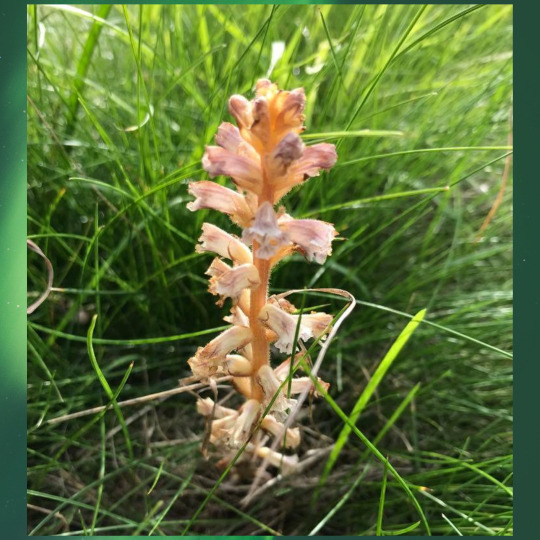
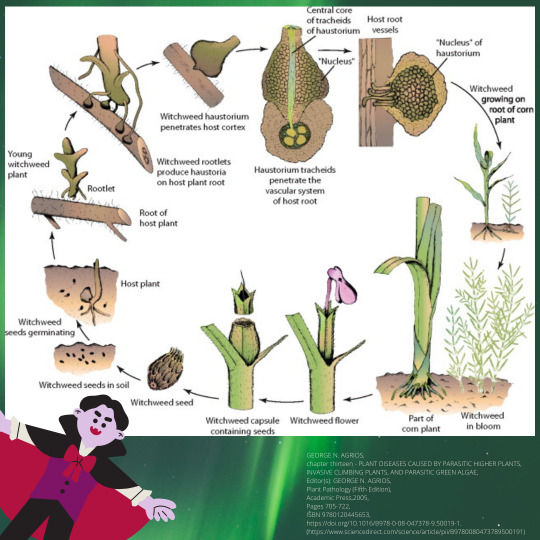
Imagine finding this unusual-looking wildflower in a summer meadow... One might assume, based on its mauve colour and upright growth, that it is a native European orchid. However, the truth is far stranger and more sinister - this odd wildflower is a "vegetable vampire" sucking the vitality from nearby plants!
The Common Broomrape (Orobranche minor) is a species of parasitic plant distributed across Europe. This plant is a "holoparasite", meaning it still has the basic anatomy of a plant (leaves, stems, roots, and flowers) but it lacks the ability to do photosynthesis and thereby generate its own energy for growth and reproduction. Most members of the Orobrancheae plant family are parasites, including the famous Striga genus which is a major pest of economically important crops such as maize and sugarcane in Sub Saharan Africa.
How does the "vampire" find its victims? Broomrape seeds can remain dormant in the soil of meadows, roadsides, and other environments for many years. If a preferred host plant starts growing near the dormant seeds, the seeds sense biological chemicals released by the potential host plants' roots. The Broomrape prefers Fabaceae (Pea family) and Asteraceae (Daisy family) plants. As the parasitic plant germinate and grows, it develops specialised roots called "haustoria" that physically penetrate the hosts' roots and extract nutrients from the host. The "vampire feeding" happens underground, so the Broomrape appears to be another innocent wildflower aboveground.
If you find a Broomrape anywhere in the UK or Europe, don't feel compelled to be a "vampire hunter" and destroy it. Please leave it be! The native European Broomrape is part of the natural ecosystem and it does not harm any crops or garden plants.
#vampire#botany#parasite#parasitic plants#creepy#striga#wildflowers#plant science#plant biology#weird facts#katia plant scientist
16 notes
·
View notes
Photo
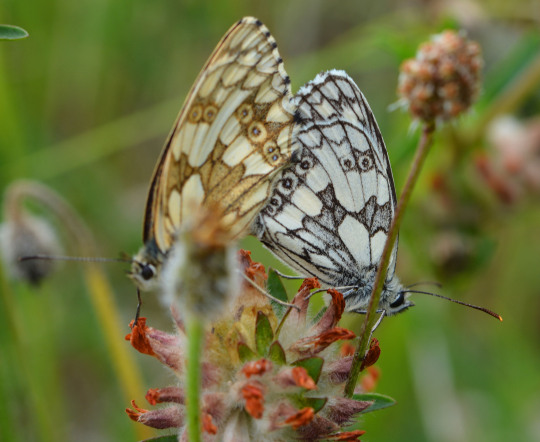




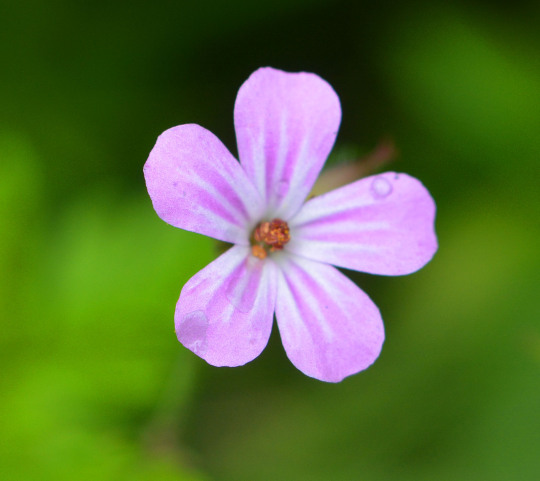
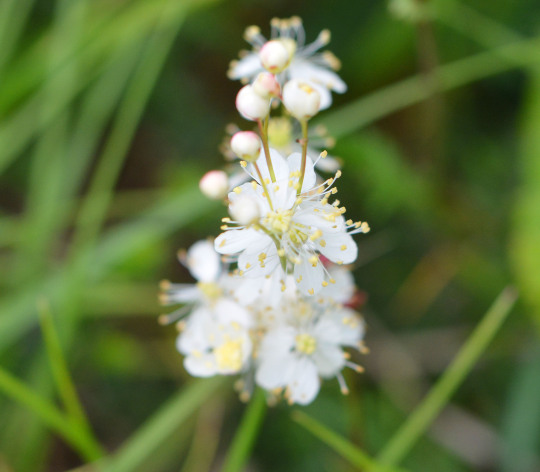



3rd July 2021-Post 2 o 3: Martin Down, the wildlife photos and story of the visit
On the journey poppies created seas of red nicely in places like I enjoyed last Sunday. And as soon as we entered the Martin Down upper car park there were lovely poppies on the bit of verge as well as pretty greater knapweed and lovely pyramidal orchids. I soon photographed the former as we for my third time after summer 2017 and 2019 went the other side of the road to the upper car park on a great woodland walk with some rich grass habitat too. I took the second and third pictures in this photoset of kidney vetch and yarrow flowers I am having great years for.
Early along on here I was delighted to see some Marbled Whites the two shown in the first picture I took today in this photoset as we are really hitting the peak weeks for them now. We saw some early on then handfuls in all the bits of grassy areas we came to today really. Including the one in the tenth and final picture in this photoset later in the walk. This included lots of striking browny females and also the special and spectacular sight of some mating which I was very happy to see a couple of times and take photos with my macro lens. Walking on and we saw some great bits of thistle in the woods and did when close to ending the walk coming back along that bit too.
As we walked on we would salute the Admiralty as we got a cracking view of a Red Admiral sat in some vegetation which I got the fifth picture in this photoset of a picture I feel is a key butterfly one for me this year already, wonderful to see this rich red and black beauty one of my favourites and one of my best views of one this year. Then there was a very special moment as I caught sight of a sweet looking White Admiral flitting along the tree line. This was a butterfly I saw extremely well on this walk in 2017 and I was hoping to see today. It was so brilliant to see this quite rare and splendid species. Another of my favourites and another I always feel really fortunate to see it was one I longed to see in my early butterfly days and in 2013 it was a big moment seeing this species on our first ever Bentley Wood visit. And between there, here, Farley Mount/West Wood, Knepp and Bolderwood and Woodlands in the New Forest I’ve been so lucky to not only see them every year but a few times in some of the years in this dizzy early summer period so I really liked seeing it for this year today.
Walking out of the woodland and we got a quick sighting of another butterfly species for the first time this year when an orange Dark Green Fritillary flew by. I was happy to see it as my 33rd butterfly species of the year so getting into really exciting figures now and I am very happy with how my year for seeing butterflies is panning out. Martin Down and Lakeside Country Park at home really are dominating the location field on my butterfly year list now which is really interesting to see. It was the fifth time I’d seen my first White Admiral of the year the same day as my first Dark Green Fritillary of the year so it was great to celebrate this special connection.
Going through the woods along a path it was nice to see some Ringlets really well a butterfly I had only just seen this year in recent days getting a great close view of some and we did see so many today which was great. A colossal Buzzard flying through the trees was a big highlight too a smashing view. We saw lots of top flowers throughout the walk; my first ever privet I recall seeing, bird’s-foot trefoil, probable common vetchling, hedge nettle, probable white campion, possible dropwort in the seventh picture in this photoset, other orchids, herb-Robert well one shown in the sixth picture I took today in this photoset, isolated speedwell once or twice, common broomrape, bright red poppy, the beautiful common rock-rose a key species for me learnt this year which I did first see here, broad-leaved clover, buttercup and pretty little purple thyme. There was an exciting lot of insects and others seen today as well like two types of beetles one of these I got the fourth picture in this photoset of, hoverfly, bee consumed by a spider and lots of other bees buzzing about on the flowers which was fantastic to see like the one on the thistle in the ninth picture I took today in this photoset. It was also fascinating to see a mushroom in the middle of the long grass which I tweeted a photo of. I have seen a few potentially early ones being so far from autumn lately which you do sometimes get and is interesting.
Going back a different way on the way back on a thistle clad forest of grass despite being overcast we were thrust into a sweet butterfly summer, and I had one of my most exceptional butterfly moments this year when we went on to see dozens of Dark Green Fritillaries flying about and landed. It was like clouds of orange at one point with as many as four quite regularly on the wing and lots interacting with each other and different species. It was phenomenal to see a strong standout butterfly moment. I don’t think I’ve ever seen so many of this species together at once. Seeing them flying, on thistles and on the ground was amazing. I just loved observing it and trying for pictures I managed the eighth in this photoset as well as others of this species today it was a wow moment with this B list favourite butterfly of mine. And it felt like almost all of the summer club of butterflies were out with Marbled White, Meadow Brown and some Small Skippers around too I found myself feeling very content to have reached this time of year.
It was nice to see a herd of cattle behind a gate on the way and on the way back on the walk. Some Skylark song serenaded me late on which was very pleasant. On the way in we saw a Yellowhammer on the road. We left Martin Down and after seeing big pigs going through the New Forest on the way up, it was great to see foxgloves, ponies and foals and apparent pregnant donkeys in nice seasonal sightings. A great Saturday.
Wildlife Sightings Summary: My first White Admiral and Dark Green Fritillary of the year, two more of my favourite butterflies the Red Admiral and Marbled White, one of my favourite birds the Buzzard, Ringlet, Small Skipper, Meadow Brown, Woodpigeon, Skylark, beetles, little moths, hoverfly, bee and I heard lovely Song Thrush too.
#hoverfly#song thrush#meadow pipit#small skipper#ringlet#buzzard#skylark#favourite#photography#photos#birdwatching#butterflies#butterfly#red admiral#white admiral#dark green fritillary#meadow brown#thistle#herb-Robert#common rock-rose#greater knapweed#common broomrape#flowers#woodpigeon#grass#grassy#poppy#rich#wildlflower#wildflowers
0 notes
Photo

Heyo, lots of flowers poppin out there! Today I am going to talk about one that can easily catch your eye. Indian Paintbrush or Castilleja chromosa. This group of paintbrushes was spotted up by the Navajo rocks area on 313. I am not sure they got the memo on social distancing 😉 There are a few types of Paintbrush that grow around the Moab area: Wyoming Paintbrush, and Eastwood’s Paintbrush, but the most common to see is the Common Paintbrush or Indian Paintbrush. The Wyoming is taller and more spindly looking and grows in wet areas. The Eastwood’s is harder to differentiate, but it is more compact and only grows in sandy or sandstone substrates. Indian paintbrush is an attractive member of the parasitic Broomrape family (Orobancaceae). Plants in this family can be either holoparasitic or hemiparasitic (fully or partly parasitic). The Paintbrush is hemiparasitic, meaning it takes nutrients from the roots of other plants, but it is also capable of photosynthesis. Plants that are holoparasitic rely completely on getting nutrients from other plants, lack chlorophyll, and cannot perform photosynthesis. Indian Paintbrush does rely on pollinators for reproduction. Insects can play a role in this, especially bees, but red is hard for insects to see. So the paintbrush is more adapted to be pollinated by hummingbirds. It is biennial, meaning it lives for 2 years. Usually this means the first year the plant becomes established, and the second year it flowers and eventually dies. It got the name “Paintbrush” by its appearance. The flower looks like a paintbrush dipped in a vibrant color, usually red. Paintbrushes do come in many colors including: orange, yellow, purple, and even white. Written by @peterrmann (at Moab, Utah) https://www.instagram.com/p/B_9_tGOD32C/?igshid=1epzgn6j9afr1
0 notes
Text


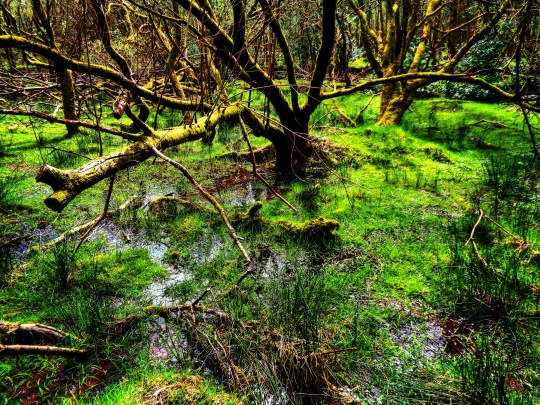

Irlandia 🇮🇪 Wicklow Mountains National Park,
Kilafin, Laragh, via Bray, Co. Wicklow A98 K286
Phone:+353 761 002667
www.wicklowmountainsnationalpark.ie
Flora in Wicklow Mountains National Park
The flora composition of the Park and Ireland can be traced back 10,000 years to the end of the Ice Age. As the climate changed and became warmer, the huge ice sheets covering the country gradually melted. As a result, sea level rose and Ireland became an island, separate from Britain and mainland Europe. This isolation of Ireland effectively restricted any further natural migration of plants to this country, and left us with over 10,000 different species of flowering plants and ferns. Over subsequent years, human activities have caused about 300 more species of flowering plants to become naturalised. Some of these non-natives arrived here accidentally, possibly in the manure of imported livestock or mixed up in the seed of imported cereals and foodstuffs. Many others were brought here as attractive garden specimens, and have since managed to escape and thrive in the wild.
Down through the years botanists have identified and recorded more than 800 different plant species in County Wicklow. This diversity includes many rare species and is due to the varied landscape within the area. The Park consists of over 20,000 hectares of assorted habitats, from mountains to blanket bog and upland heath, broadleaved woodland, conifer plantations, lakes, rivers and streams. Each of these habitats contains specific communities of plants, which have evolved and adapted to the conditions within the habitat. To learn more about the habitats and their associated flora see our habitat pages.
For the identification of wildflowers throughout Ireland, we can recommend www.wildflowersofireland.net.
Threatened Plants
There are eight plants recorded in the Park which are considered at risk. They are listed below along with their status according to the Red Data Book and also if the plant is protected under the Flora Protection Order 1999.
Lanceolate Spleenwort, Fionncha Lansach
(Asplenium obovatum)
Red Data Book:Vulnerable
Flora Protection Order:Yes
A small fern that grows on banks and walls near the south and east coasts. It has been recorded at 12 sites nationwide, but only at three since 1970, two of which are in Wicklow.
Parsley Fern, Raithneach Chas
(Cryptogamma crispa)
Red Data Book: Rare
Flora Protection Order: Yes
This fern grows in rocky and stony places in mountainous areas of the north and east of the country. There have been nine records in the past, but only three recent ones.
Small White Orchid, Magairlín Bán
(Pseudorchis albida)
Red Data Book: Vulnerable
Flora Protection Order: Yes
This orchid grows in upland pastures and heaths. In the past it was recorded in 23 counties, however, only seven records are post 1970.
Bog Orchid, Magairlín na Móna
(Hammarbya paludosa)
Red Data Book: Rare/Vulnerable
Flora Protection Order: Yes
This orchid grows in wet bogs, on tufts of Sphagnum moss. The species has suffered a decline and Curtis & McGough (1985) considered it to be one of the two most threatened European vascular plants found in Ireland.
Alpine Lady’s Mantle, Dearna Mhuire Alpach
(Alchemilla alpina)
Red Data Book: Rare
Flora Protection Order: No
This plant is found on mountain cliffs in Wicklow and Kerry. It has been recorded at three Irish sites and one of these is within the Park.
Marsh Clubmoss, Garbhógach Chorraigh
(Lepidotis mundata)
Red Data Book: Rare
Flora Protection Order: No
This moss has been recorded at 22 Irish sites, but only eight since 1970. It was last recorded in the Park area in 1920.
Greater Broomrape, Múchóg
(Orobanche rapum-genistae)
Red Data Book: Rare
Flora Protection Order: No
A species that parasitises the roots of Gorse and Broom. It was once frequent near the south and east coasts, however, it is now very rare. It has been recorded in seven sites since 1970 and two of these are in Wicklow.
Alpine Saw Wort, Sábhlus Alpach
(Sausserea alpina)
Red Data Book: Rare
Flora Protection Order: No
An alpine species that grows on mountain ledges and cliffs above 300m, mainly in the western half of the country. It has only been recorded in 10 Irish sites since 1970.
Note: If you should see any of the above elusive plants, do not pick them. Please notify a Park ranger of their exact location
0 notes